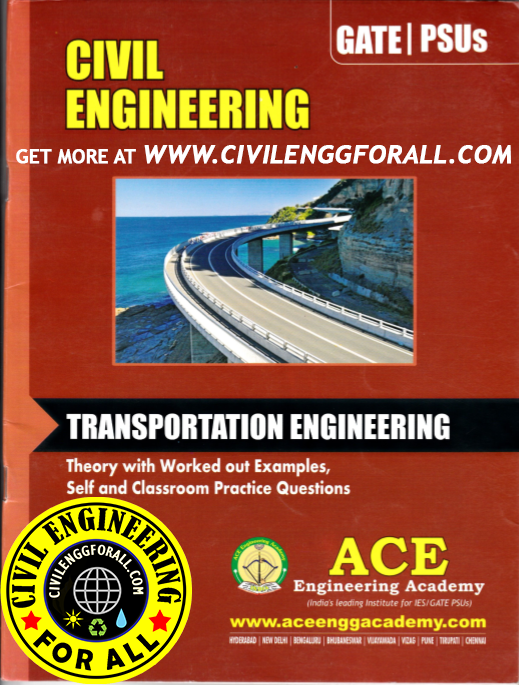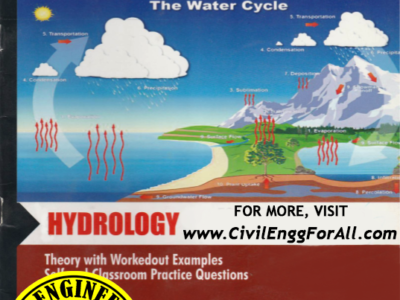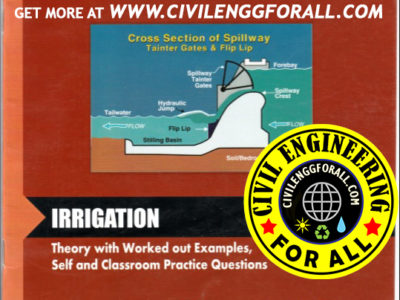TRANSPORTATION ENGINEERING
GATE IES PSU’s – STUDY MATERIAL
ACE ENGINEERING ACADEMY FREE DOWNLOAD PDF
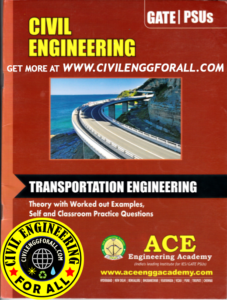
- SUBJECT : TRANSPORTATION ENGINEERING – THEORY AND WORKED OUT EXAMPLES, SELF AND CLASSROOM PRACTICE QUESTIONS
- PUBLISHERS : ACE ENGINEERING ACADEMY
- IDEAL FOR : GATE & PSUs – CIVIL ENGINEERING
- EDITION : 2014
- AUTHORS : SUBJECT EXPERTS OF ACE ENGINEERING ACADEMY, HYDERABAD
CONTENTS
- Highway Development and Planning
- Highway Alignment and Surveys
- Highway Geometric Design Basic Elements
- Highway Geometric Design-Gradients
- Highway Geometric Design Sight Distances
- Highway Geometric Design overtaking sight Distance (OSD)
- Highway Geometric Design Horizontal Curves Horizontal curves (Extra widening)
- Set Back Distance and curve Resistance
- Highway Geometric Design Transition curves
- Highway Geometric Design Vertical Curves
- Highway Geometric Design Valley Curves
- Highway Materials and Testing
- Pavement Design
- Rigid Pavements
- Traffic Engineering
TRANSPORTATION ENGINEERING – BRIEF DESCRIPTION TO THIS BOOK :
Important events in Road development: 1. Roman’s are the pioneers in road construction At Rome 29 roads were meeting 2. Indian Roads: Indus valley civilization (5000BC), towns are planned with Grid Pattern. Mouryans 000 to 2000 BC) Chandra Guptha Mourya constructed 2400 km long road from Pataliputra (patna) to Takshashila now in Pakistan) First British Road GT road from Calcutta to Delhi 3. Treasagat construction (France (1716-1796) 4. Metcalf (England) (1717-1810) 5. Telford(1757-1834) construction: Sub grade is kept horizontal and hence sub drainage was not proper Heavy foundation stones, to total thickness of the order of 35 cm at edge to 41 cm at center.
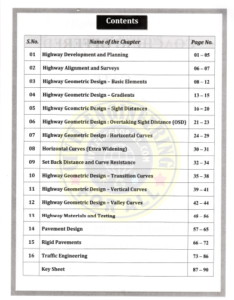
6. Macadam construction (1756-1856)
The importance of sub grade draining and compaction was recognised and cross slope of 1 in 36, was proposed from sub grade level itself. The first method based on scientific thinking. It was realised that the stresses due to wheel 5. loads of traffic gets decreased and the lower layers of the pavement and therefore it is not required to provide large boulder and stones or soiling course at the lower layer of the pavement II. Highway development in India (Important events 1. Jayakar committee (Indian road development committee 1927 recommendations: (a) Road development to be considered as a national interest.
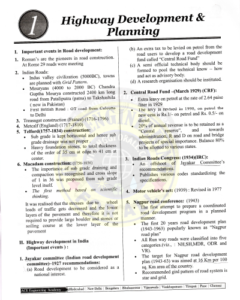
Indian Roads Congress: (1934)(IRO) An offshoot of Jayakar Committee’s recommendations Publishes various codes standardizing the specifications 4. Motor vehicle’s act: (1939) Revised in 1977 5. Nagpur road conference: (1943) The first attempt to prepare a coordinated road development program in a planned manner The first 20 years road development plan 1943-1963) popularly known as “Nagpur road plan” All Run way roads were classified into five categories.(viz., NH,SH,MDR, ODR and VR) The target for Nagpur road development plan (1943-63) was aimed at 16 Km per 100 sq. Km area of the country Recommended gird pattern of road system is star and grid
National Highway Development Program NHDP)
Prime focus is on developing International standard roads with facilities for uninterrupted flow of traffic with
Enhanced safety features
Better Riding Surface
Better Road Geometry
Better Traffic Management and Noticeable Signage.
Divided carriageways and Service roads
Grade separators
Over bridges and Underpasses
Bypasses
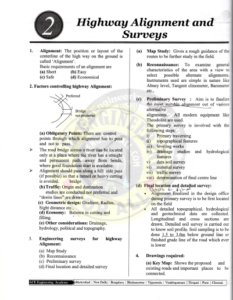
Road Patterns:
1. Rectangular or Block Pattern Adopted in Chandigarh, from traffic operation point this is not considered convenient.
2. Star and Grid Pattern Nagpur road plan formulae were prepared assuming star and Grid pattern Provides inter communication facilities to each of the villages, towns, district Head Quarters, State Capitals etc The best example of grid pattern is Chandigarh (Chandigarh is the 1st planned modern city of India designed by the French architect Le Corbusier) 3. Radial and circular pattern: Connaught place, New Delhi
Vertical Alignment Longitudinal Gradients (a) Gradient is the rate of rise or fall along the length of the road with respect to horizontal (b Expressed as “l’ vertical unit to ‘N’ horizontal units
Type of Gradients
(i) Ruling Gradient Also known as “Design Gradient’ During normal course, the Gradient on road should never exceed this value, The gradient is fixed in such a way that speed of the vehicle should not decrease while moving on the gradient The gradient is also fixed in such a way that maximum power developed by the engine equal to the power required to overcome the resistance to motion on the grade at design speeds
(ii) Limiting Gradients (Maximum gradient A gradient steeper than the ruling gradient which may be used in restricted length, where keeping with in the ruling gradient is not possible due to topography
(iii) Exceptional Gradient: A gradient steeper than the limiting gradient which may be used in stretches only 60 in l km road short length or should not exceed 100 m at a stretch exceptional situations
DOWNLOAD LINK : GATE & PSU’s – TRANSPORTATION ENGINEERING – CIVIL ENGINEERING – ACE ENGINEERING ACADEMY STUDY MATERIAL – 2014 EDITION – FREE DOWNLOAD PDF
DISCLAIMER : THIS WEBSITE IS NOT THE ORIGINAL PUBLISHER OF THIS BOOK ON NET. THIS E-BOOK HAS BEEN COLLECTED FROM OTHER SITES ON INTERNET. ALL THE RIGHTS ON THIS BOOK BELONGS TO ACE ENGINEERING ACADEMY.

